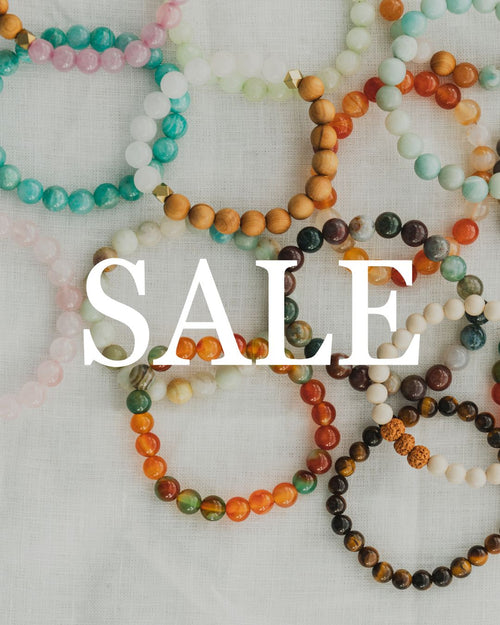Crystals are one of nature’s most powerful and beautiful spiritual tools. We can use them to heal and balance our energies and cleanse the energies around us, empower ourselves, connect with the spiritual world, and even manifest our dreams.
They’re an important part of spirituality for many people, but they do come at a price – so of course, there are many people out there who make and sell fakes. Whilst these pose no threat to those who own them spiritually, they are don’t hold any real power and are a waste of your time and money. So, how can you tell if a crystal is real or fake? Let’s take a look at what you need to know.
How Are Crystals Faked?
Fake crystals are often just glass, plastic, or resin that has been dyed or chemically altered to make them look like a crystal. Sometimes, sellers also treat crystals to make them look like different stones that are more expensive or popular.
Treated vs Fake Crystals
Treated crystals are not the same as fake crystals. Treated crystals are those that have been treated with heat to change their appearance. It’s usually done purely for aesthetic reasons, (unless it’s being made to look like a different stone altogether as explained above), and whilst opinions differ on whether or not it makes a difference to the powers of the stone, most people agree that treated gemstones work just as well for crystal healing as natural crystals. Fake or synthetic crystals, however, are not crystals at all.
How To Tell If A Crystal Is Real Or Fake
These are the easiest ways you can identify fake crystals.
Unusual Names
If you’re looking at crystals online and they have unusual names, such as strawberry quartz or aqua aura quartz, it could be a sign that they’re fake. It’s sort of a loophole; if they are not sold under the names of real crystals, legally, you’re not entitled to a refund when you realize it’s fake.
Saturated Color
The most obvious tell-tale sign of a fake crystal is the color. Apart from a few darker-colored crystals, like Black Tourmaline, for example, the majority of crystals are quite gentle in color, so anything that is highly saturated and super vibrant is likely to be fake.
We understand they can look cool – but that is the point! Many fake sellers will do this to make their products look more enticing and magical and sell them for more than they are worth.
That said, some sellers do heat-treat their crystals to make them appear more vibrant, and whilst they’re not their natural, original color, they’re still real.
Perfect Symmetry
Another good indication that a crystal you’re looking at is fake is perfectly symmetrical patterns. Things in nature are almost never symmetrical, including crystals. So, if a stone is perfectly even and symmetrical in shape, color, texture, and pattern – it is more than likely manmade. That said, some sellers like to cut and polish their gems so that they’re an even, smooth shape – but even so, the colors shouldn’t be exactly even.
Although they make look nice, part of what makes owning crystals so cool is that each one is unique; so you should welcome chips, wonky shapes, dark patches, and flaws, and avoid anything too perfect looking.
Glassy Look & Feel
Painted or colored glass is probably the most common form of crystal fakery, but even plastic stones will have a clear, glassy look and feel. No natural crystal is as smooth or shiny as glass, and although some sellers like to smooth and polish their gems, real ones that have been treated still won’t be super clear or transparent looking.
Air Bubbles
Air bubbles are another clear sign that you are dealing with a fake. Many glass products that are machine-made have air bubbles in them, like toy marbles, for example, but crystals, although imperfect, do not ever contain air bubbles.
Weight
This may only be applicable to larger crystals, but fake materials like glass and plastic are much lighter than real crystals, so if you are looking at a large crystal, such as a big geode, it should have some significant weight to it. If it doesn’t – it might not be real.
Hardness
The Moh’s hardness scale is a scientific scale going from 1-10 used to determine the hardness of minerals by testing their resistance against each other. It is a great way to determine whether or not a crystal can be used with water – or if it is even real.
Every physical thing in the world has a score on the scale, with diamonds being the hardest, scoring a ten out of ten, and talcum powder and soapstone being the softest, scoring a one. As for other crystals, each one is different. Quartz crystals, for example, score a 7 on the scale, whilst Topaz scores an 8.
You can carry out the test yourself to see if your crystal is genuine, by scratching your crystal against something that is lower than it on the scale to see if it leaves a mark. A good surface to use is glass, as it scores a 5, and it is lower on the scale than most popular gemstones.
Heat
Precious stones like Topaz are cold to the touch and lose the heat of contact quickly, so you can also use this to test your crystals. You can even use heat to see if your crystals melt by poking them with a hot knife if you suspect that they are made of plastic.
Energy
If you are still not sure whether or not a crystal is fake, use your intuition. If you’re looking at the crystal in person, pick it up and see if you can feel any energy coming off of it. If you can’t feel anything and it looks and feels fake – it probably is!
Which Crystals Are Faked The Most?
These are the most commonly faked crystals.

Clear Quartz
Clear Quartz is one of the most commonly faked crystals because it is so popular and it’s easy to fake. It is well-loved for its cleansing properties and ability to connect with the crown chakra, and its colorless appearance doesn’t require much effort to replicate. With this stone, watch out for transparency, symmetry, and air bubbles.
Amethyst
Amethyst is another common fake because it is a good all-around healing crystal and it is a very popular beginners crystal. The main thing to look out for with these stones is their color and uniformity.
Rose Quartz
Rose Quartz is a prominent member of the Quartz family due to its heart chakra healing properties and beautiful feminine color. With Rose Quartz crystals, you want to look for a pale pink color and imperfections inside.
Smokey Quartz
Smoky Quartz is a grounding stone that helps to release deep-seated negative energy. The legitimacy of these crystals is harder to assess because they can all look quite different; some of them are a light gray color, whilst others are dark brown, but they all have black inclusions inside of them – and this is what you should look for!
Citrine
Citrine is associated with positivity and manifestation. Natural Citrine crystals are actually quite rare. More often than not, crystals sold as Citrine online are actually heat-treated or dyed Quartz crystals. So, be sure to read the fine print, buy from a trusted source, and look for a sunny yellow hue.
Aura Quartz
Aura Quartz is a treated crystal by definition. It’s not natural, but it’s not fake, either. It’s simply Clear Quartz that has been treated to give it that amazing rainbow hue. However, Aura Quartz is still a real gemstone, but there are a lot of plastic and glass fakes due to its popularity. So, be sure to check its temperature and look for air bubbles inside.
Carnelian
Carnelian is a powerful stone that relates to the sacral chakra and aids manifestation. A lot of Carnelian crystals sold online are actually white or gray agate that has been dyed orange, so be sure to check the color closely and buy from a reputable source.
Turquoise
Turquoise is a popular stone that usually contains lots of different shades of blue. It is an excellent physical, emotional, and spiritual healer and is known to dispel bad energy. Most Turquoise crystals on the market are actually dyed Howlite, which is a real crystal with its own healing powers, but it is not the same as Turquoise.
The color is important with these stones; as a real one should have variations of the color blue running through it, whereas most fake Turquoise are just one solid color.
Blue Moonstone
Blue Moonstone is another heart chakra stone. It is truly beautiful and magical looking, and it is a very powerful and intuitive healer. Whilst fakes might look similar on the surface, they won’t be able to replicate the irisation effect inside the stone and the stunning blue sheen.
How To Avoid Fake Crystals
To avoid fakes when shopping for new gems, we recommend sticking to popular and reputable shops and websites that you trust and feel safe using. When buying from independent sellers, always read the ratings and customer reviews first.
A good indication of whether or not a store is selling fake goods is when they have extremely high numbers of stock or charge prices that don’t quite seem right.
Conclusion
There are a lot of fakes out there, but if you use our top tips on how to tell if a crystal is real, you’ll save yourself a lot of time and money!
The post How To Tell If A Crystal Is Real Or Fake first appeared on Zen and Stone.

